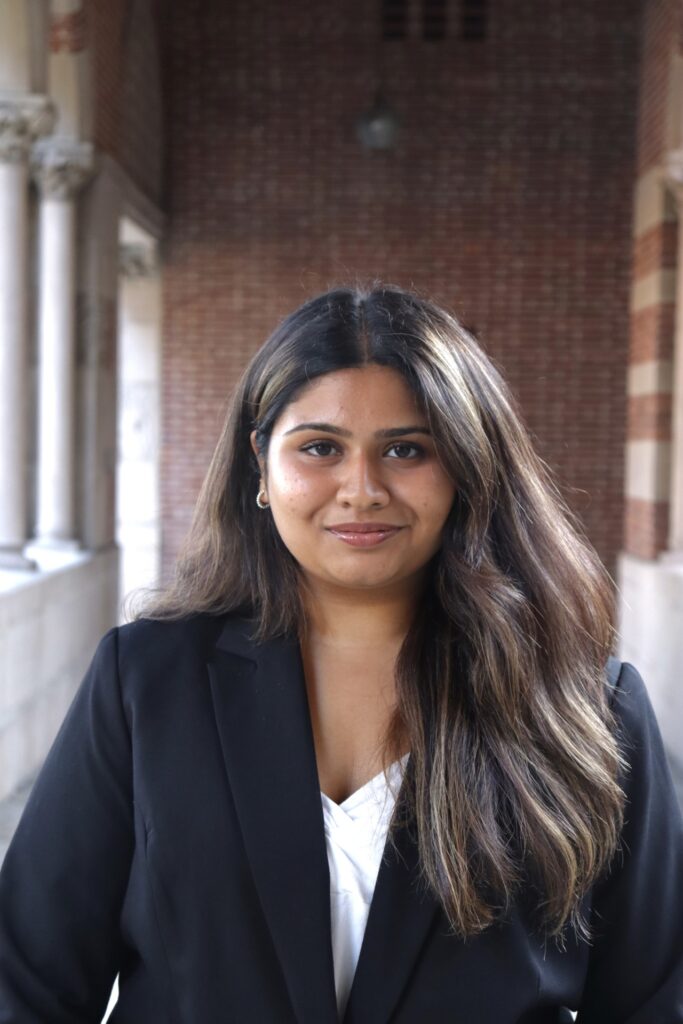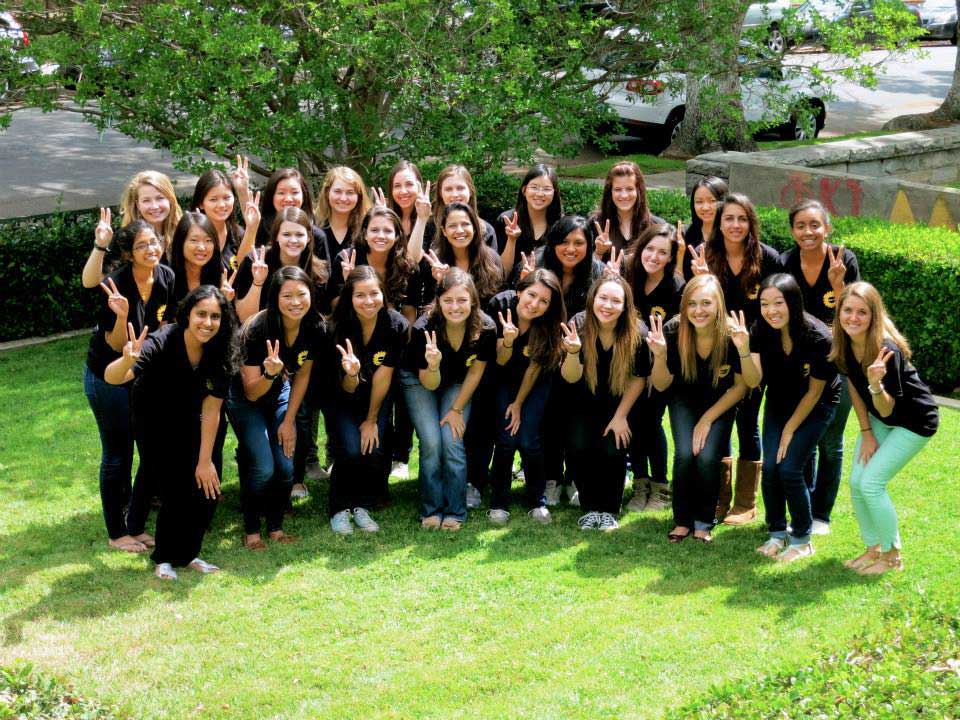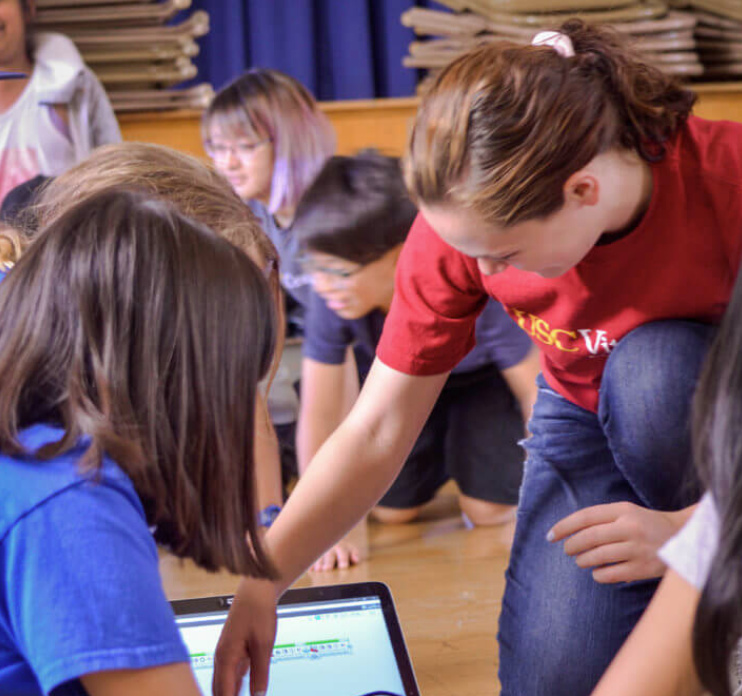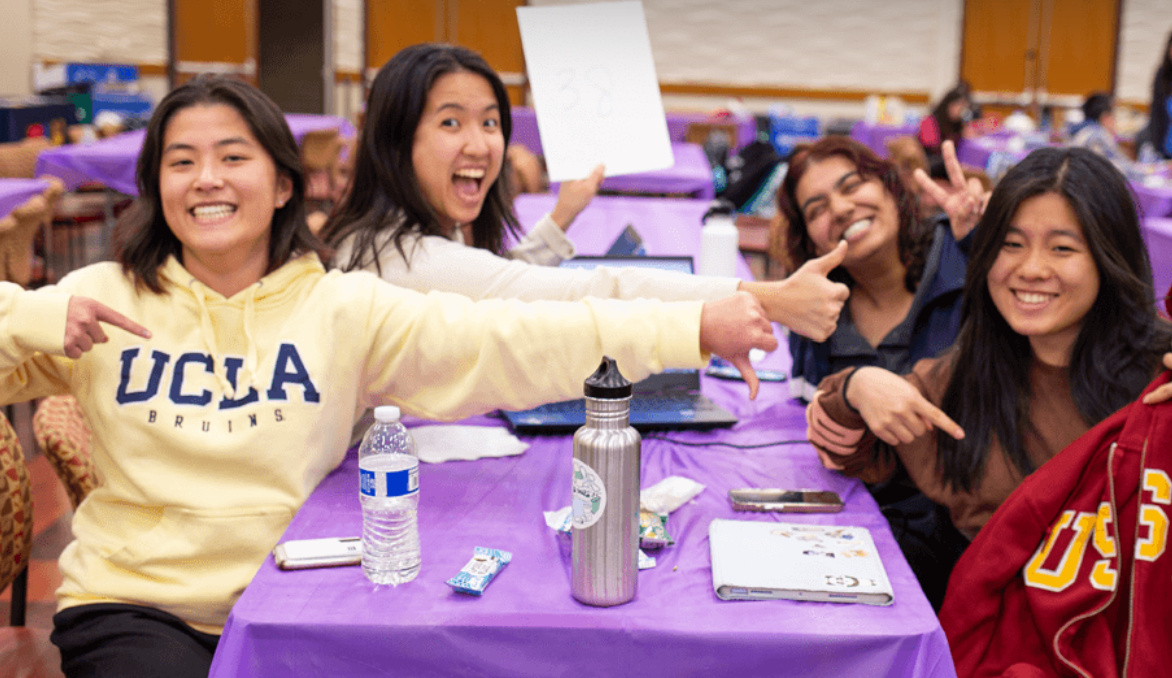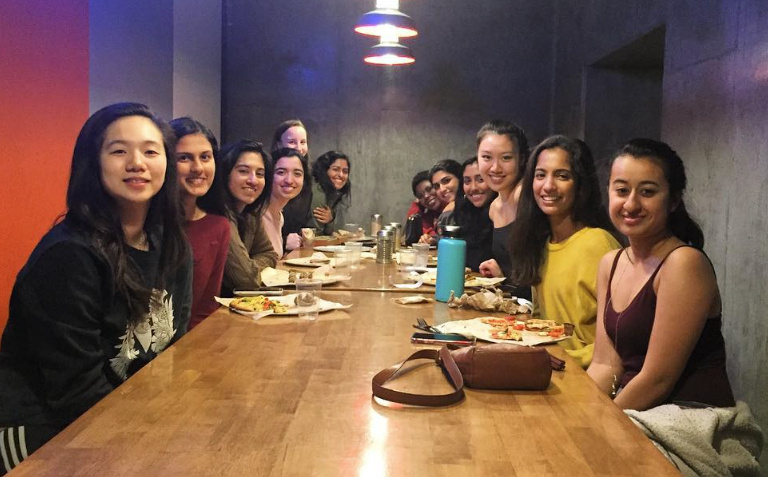Supporting Our Women
Your generation is going to even out the engineering experience, and we are leading the way. Our incoming class of first year women is consistently more than double the national average and has maintained gender parity in our incoming first year class since Fall 2019. Our women thrive in engineering here because we offer the right support.
USC Viterbi Women in Engineering (WIE)
Women in Engineering (WIE) offers professional, academic, and social services to students who identify as women and non-binary at the USC Viterbi School of Engineering. The goal of WIE is to provide resources and overall support that will address the unique challenges women and non-binary engineers face. WIE’s mission is to allow our women and non-binary students to find personal and professional success, both during their time at USC Viterbi and beyond.

Student Organizations
Female students in the Viterbi School participate in a number of activities across campus in addition to engineering related organizations. The student chapters of the Society of Women Engineers (SWE), Women in Computing, and the engineering sorority Alpha Omega Epsilon are integral parts of Women in Engineering in addition to numerous undergraduate research opportunities with specific funding available to women.
As a member of these organizations, you will find opportunities to expand your professional and social network, get involved in community outreach programs, gain access to continuing student scholarships, travel to conferences, and have opportunities to develop as a leader.
Imagine yourself on campus.
Learn more about life at USC as an engineering student at Viterbi Voices:
Female Faculty Accolades
Our faculty continue to increase the number of females almost year by year with one of the largest representations in engineering schools today. 50% of our Freshman Academy courses are typically taught by women. Female faculty not only teach your classes, but they also lead teams of researchers in making strides toward advancing solutions to the NAE Grand Challenges.
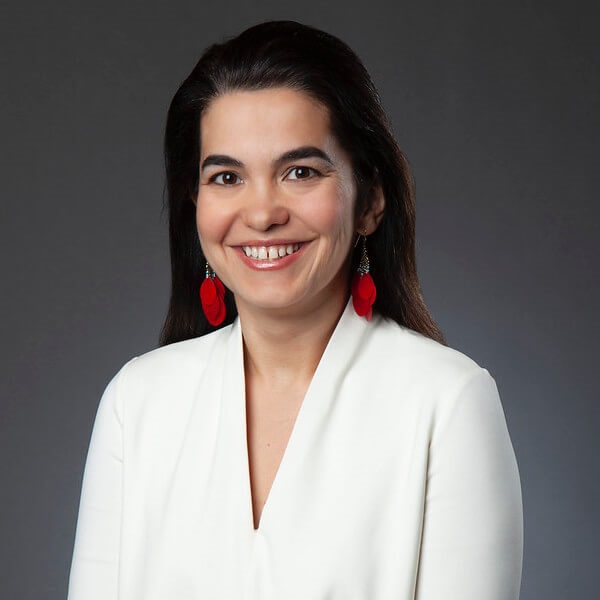
Burcin Becerik-Gerber
Dr. Becerik-Gerber currently serves as the Department Chair for the Sonny Astani Department of Civil and Environmental Engineering. She has also been named to TR's 35 innovators under 35. Dr. Becerik-Gerber's research focuses on the efficient construction of buildings, and understanding the habits of the buildings occupants to reduce energy consumption in buildings and increase comfort. Her collaborations include social psychology as well as computer science to better understand her users.
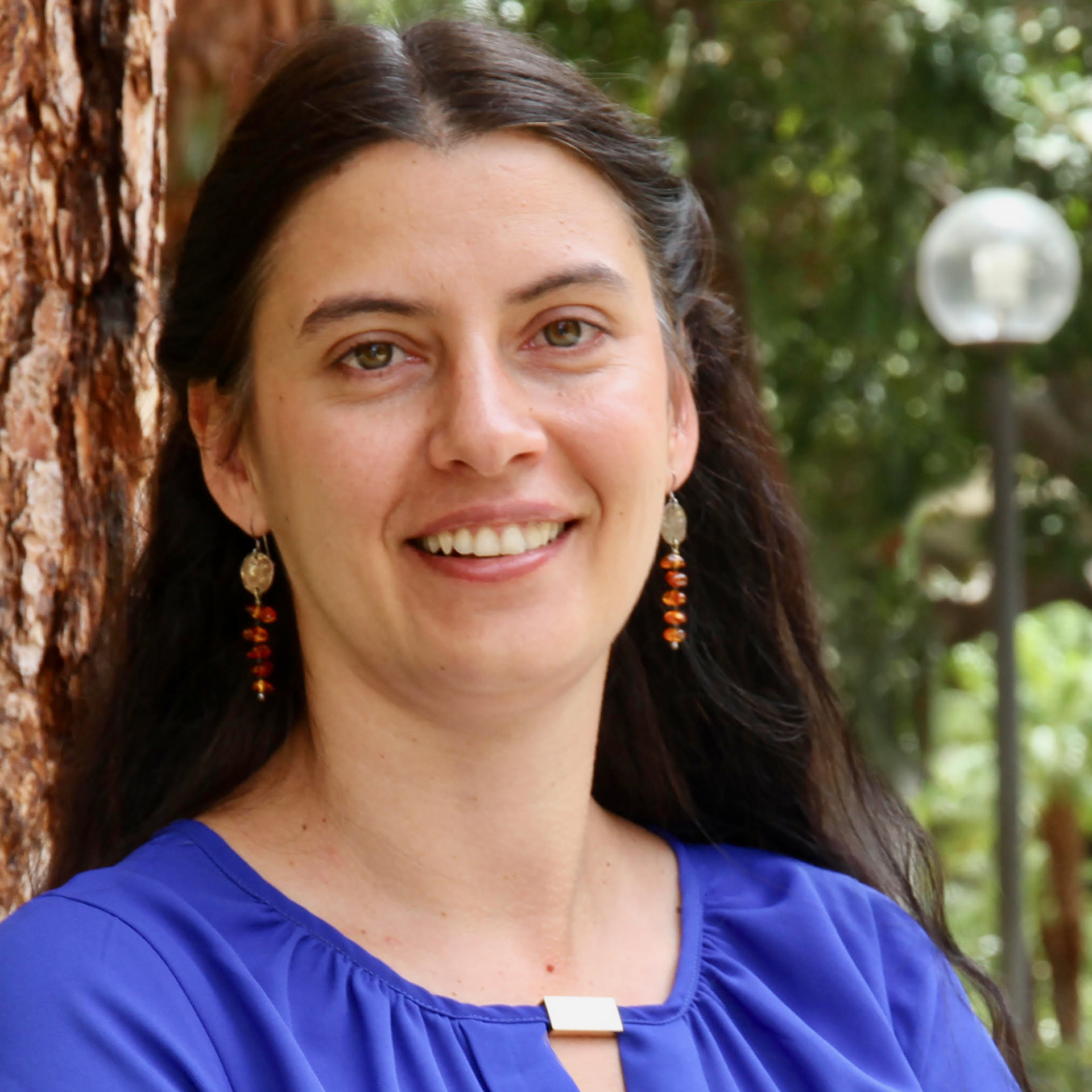
Bistra Dilkina
Dr. Dilkina is an Associate Professor of Computer Science and is one of the junior faculty members in the young field of Computational Sustainability. She is the co-director of the Center for Artificial Intelligence in Society (CAIS) and her research focuses on advancing the state of the art in combinatorial optimization techniques for solving real-world large-scale problems, particularly ones that arise in sustainability areas such as biodiversity conservation planning and urban planning.
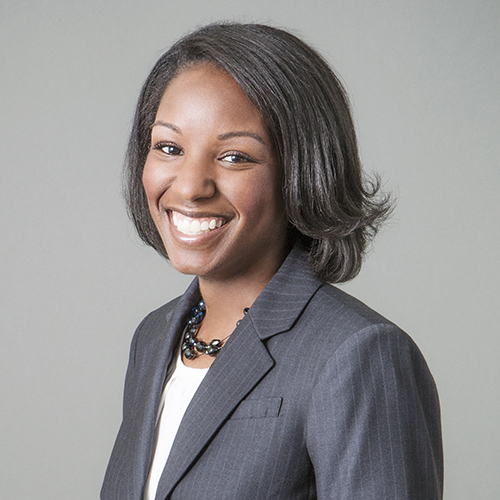
Stacey Finley
Dr. Finley is an Associate Professor in the Department of Biomedical Engineering and holds joint appointments in the Mork Family Department of Chemical Engineering and Materials Science, and the Department of Biological Sciences. Dr. Finley's current research applies a systems biology approach to develop molecular-detailed computational models of biological processes related to human disease.
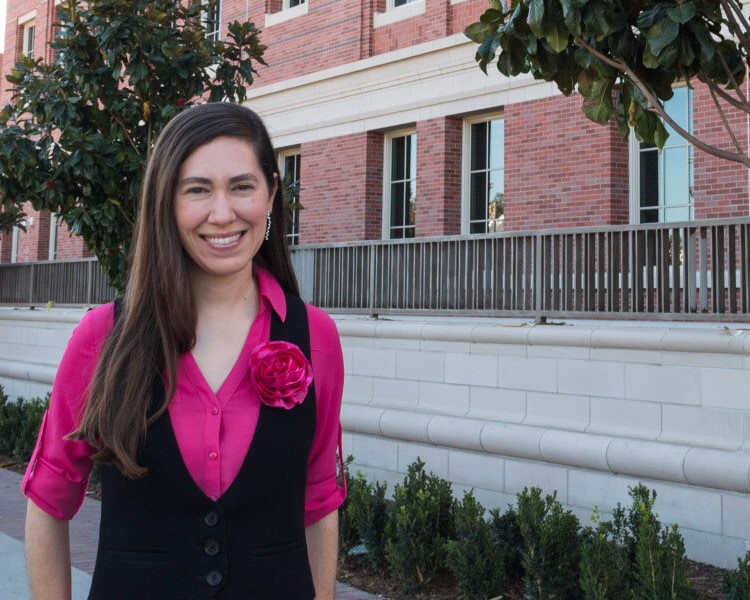
Cristina Zavaleta
Dr. Zavaleta is an Assistant Professor of Biomedical Engineering and runs her own lab: the Zavaleta Lab. Her research focuses on the development, assessment and clinical translation of new diagnostic strategies that include functional imaging capabilities to help clinicians detect cancers with better sensitivity and specificity. These tools are directed at improving early cancer detection during routine screening techniques and helping surgeons identify and resect tumor margins with better sensitivity and specificity.

